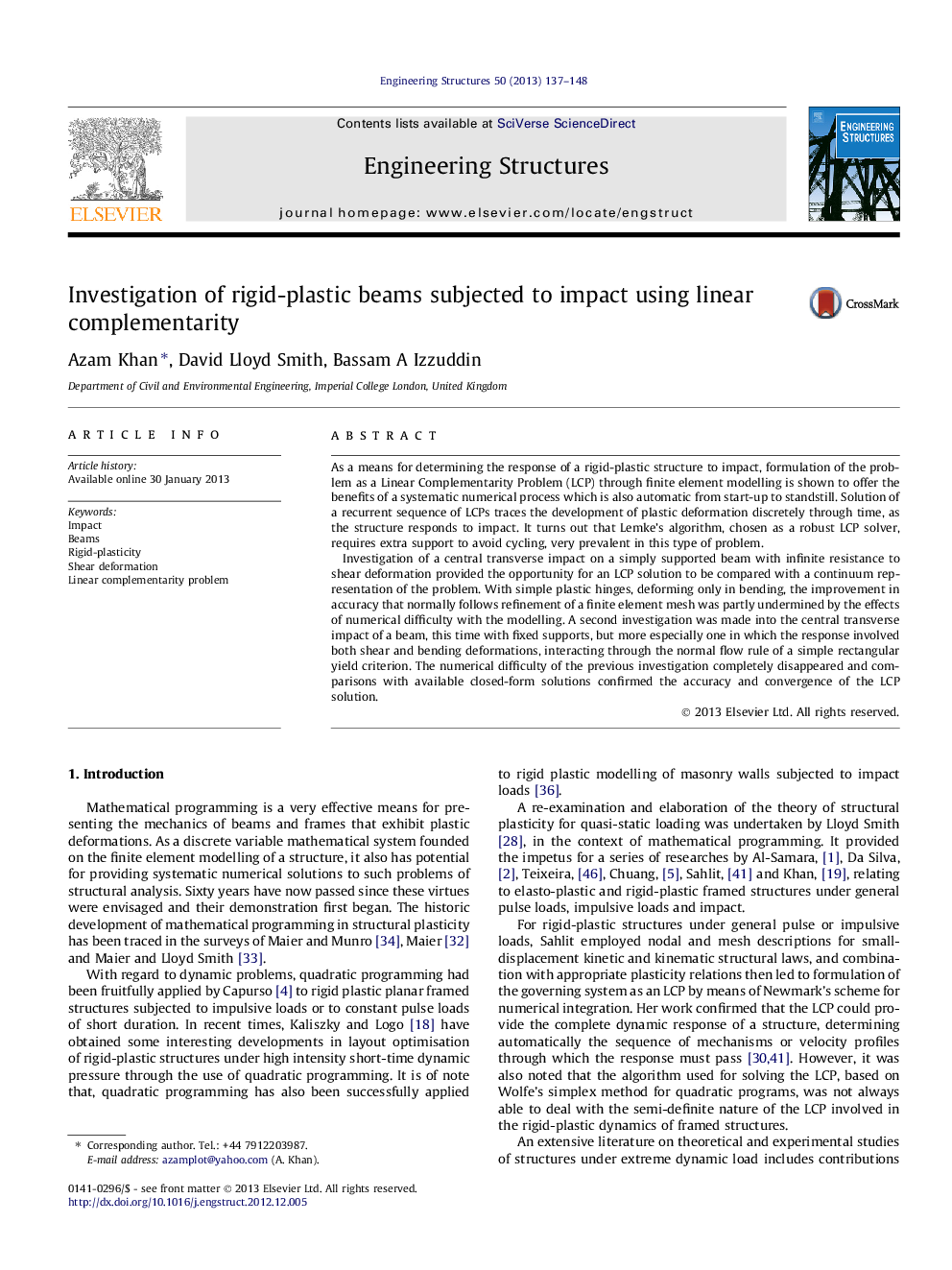| Article ID | Journal | Published Year | Pages | File Type |
|---|---|---|---|---|
| 267067 | Engineering Structures | 2013 | 12 Pages |
As a means for determining the response of a rigid-plastic structure to impact, formulation of the problem as a Linear Complementarity Problem (LCP) through finite element modelling is shown to offer the benefits of a systematic numerical process which is also automatic from start-up to standstill. Solution of a recurrent sequence of LCPs traces the development of plastic deformation discretely through time, as the structure responds to impact. It turns out that Lemke’s algorithm, chosen as a robust LCP solver, requires extra support to avoid cycling, very prevalent in this type of problem.Investigation of a central transverse impact on a simply supported beam with infinite resistance to shear deformation provided the opportunity for an LCP solution to be compared with a continuum representation of the problem. With simple plastic hinges, deforming only in bending, the improvement in accuracy that normally follows refinement of a finite element mesh was partly undermined by the effects of numerical difficulty with the modelling. A second investigation was made into the central transverse impact of a beam, this time with fixed supports, but more especially one in which the response involved both shear and bending deformations, interacting through the normal flow rule of a simple rectangular yield criterion. The numerical difficulty of the previous investigation completely disappeared and comparisons with available closed-form solutions confirmed the accuracy and convergence of the LCP solution.
► Rigid beam response to impact is formulated as Linear Complementarity Problem (LCP). ► The LCP is shown to offer a systematic numerical process. ► Lemke Algorithm is chosen as a robust LCP solver. ► LCP solutions of central transverse impact on beams are investigated.
